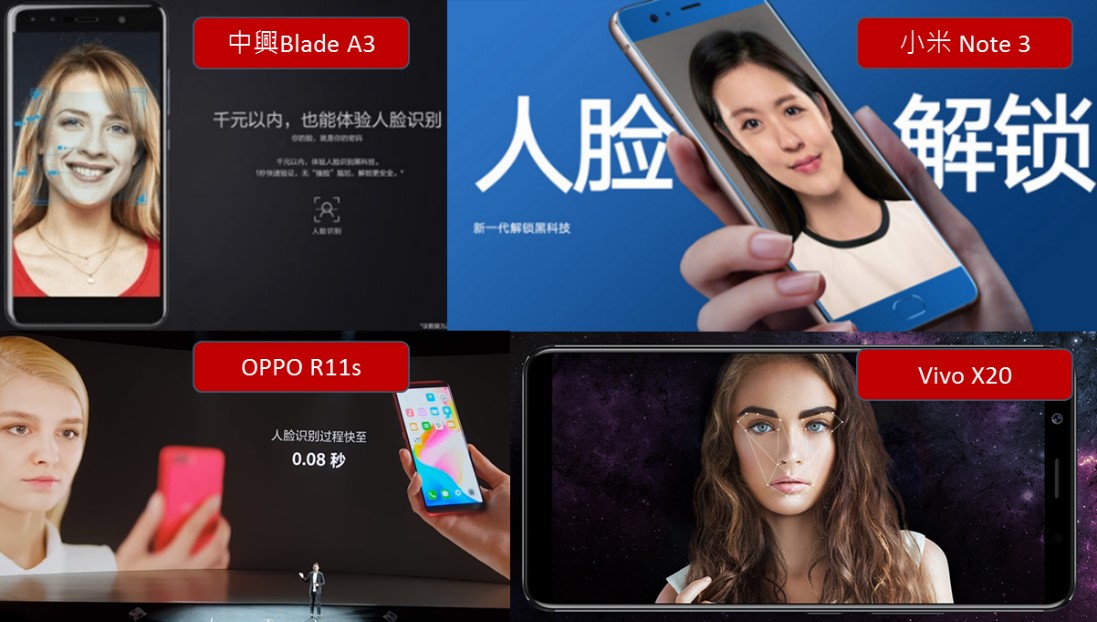Apple has introduced 3D sensing modules in iPhone X for the first time, together with neural network embedded in its A11 chip. 3D sensing modules record three-dimensional data while A11 chip processes large amounts of data, allowing iPhone X to learn and identify a variety of facial details and expressions. The modules also ensure that users can be correctly identified even when their appearances change, making it more difficult to counterfeit.
The 3D sensing modules in iPhone X not only increase the accuracy of facial recognition but also enhance performance of camera and AR experiences.
Thanks to 3D sensing modules, iPhone X front camera can record 3D data
The 3D sensing modules in iPhone X can capture depth data, allowing iPhone X to process light sources more actively. Therefore, even the basic front-camera (7 megapixels) can provide functions like Portrait Mode and Portrait Lighting.
Portrait Lighting is not the same as filters. Instead, it provides real-time analysis and simulation based on actual luminosity. In addition, the infrared camera captures more depth data, thus better facilitating AR functions than iPhone 8 Plus, which embeds wide-angle and telephoto lens. In short, iPhone X has featured the concept of 3D camera while most of other competing phones only record 2D information.
 |
|
Basic Structure of 3D Sensing Modules (Source: TrendForce, Nov., 2017) |
Currently, 3D sensing applications in iPhone X consist of two categories: One is biometric recognition and authentication, and two is camera performance enhancement and AR effects. The future development of 3D sensing can be inferred from Kinect, which uses a module similar to the TrueDepth camera in iPhone X. Since Kinect allows players to operate the interface through voice commands and gestures, TrueDepth camera (along with existing speakers) should be able to do the same through some software updates, theoretically speaking. Therefore, iPhone X’s 3D sensing could potentially mean the introduction of next-generation human-machine interface for future smartphones.
Android phones have different solutions for facial recognition
It is still unclear whether 3D sensing will become a standard feature in smartphones, but undoubtedly iPhone X has set off the trend of face recognition in the smartphone market. As for the Android camp, a few brands including Xiaomi, OPPO, Vivo, ZTE, etc. have released new models with facial recognition in 2017.
However, their solutions are fundamentally different from that of iPhone X in terms of concepts and practices. iPhone X adopts additional hardware components to gather depth data to improve recognition accuracy but the solution provided by Face++ is software-based and uses existing front camera only. The recognition accuracy of these products using Face++’s solution is much lower than that of iPhone X, thus unsurprisingly all of them still keep fingerprint recognition in order to enhance security.
 |
|
Latest Models Featuring Facial Recognition Technology (Source: TrendForce, Nov., 2017)
|
Higher penetration of 3D sensing will depend on Android phones
Whether 3D sensing is only an overnight sensation or potentially a future standard feature in smartphones may well depend on Android phones. Market reactions and availability of 3D sensing modules will be critical factors for Android phones in deciding whether to adopt such technology. At this stage, the author believes that it is still yet too early to decide if facial recognition would become a standard feature. If customers do not give positive feedback, it is unlikely that the Android camp would follow suit. Instead, they could focus on optimizing fingerprint recognition technology (such as under-display solutions) in order to gain first-mover advantage. Moreover, the applications of 3D sensing module are not limited to face recognition only, and many possibilities remain to be explored with such technology. Therefore, 3D sensing and fingerprint recognition are not mutually exclusive, which could be beneficial to the long-term development of 3D sensing.
Moreover, the cost of 3D sensing module in iPhone X ranges from 18 to 24 US dollars, but the number of Android brands that are capable of passing on such a cost to consumers is very limited. In addition, there are still technical barriers in the assembly of 3D sensing modules, and even Apple itself has had a hard time in the assembly process. Therefore, the key to massively adopting 3D sensing modules for Android phones is to find reliable suppliers with good yield rate, well-developed solutions, and stable mass production.
(Written by Peter Huang, Analyst at Department of Smart End-Device, TrendForce)













